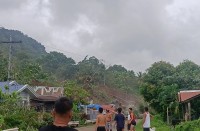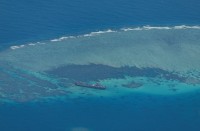QUEZON CITY, May 25 (PIA)–The Quezon City government through the City Disaster Risk Reduction and Management Council (QCDRRMC), reiterated its call to declare as danger zone the 7-kilometer stretch of the fault system that runs through QC’s periphery.
The City government in cooperation with the Philippine Institute of Volcanology and Seismology (PHIVOLCS) and Geoscience Australia conducted last year trenching activity across the West Valley Fault line at Barangay Bagong Silangan, which is intended to identify and determine some known traces of the fault line, including ground rupture movements and slip rate estimates across the fault line.
The activity involves excavations of two trenches, about 50 meters apart, within the 50-hectare property owned by Banco Filipino at Barangay Bagong Silangan, which, according to a Metro Manila Earthquake Impact Reduction Study (MMEIRS), registers high susceptibility to earthquakes, along with Barangay Payatas, also in QC.
As a result of the trenching activity, geologists from PHIVOLCS recorded evidence of ground displacement, including abrupt change of sediment layers across the fault. The exposed trench walls indicated that at least two to three earthquake events have already taken place in the past.
PHIVOLCS is now in the process of collecting specimens for carbon-14 analysis to determine the approximate time of the occurrence of the said earthquakes and the estimated age of the sediment layers affected by the ground displacement.
“The PHIVOLCS findings just validated the claim that the West Valley Fault Line is indeed active,” said Elmo San Diego, action officer of the QC disaster risk reduction management council and head of the city’s department of public order and safety. San Diego represented Mayor Herbert Bautista during the inspection of the trench site.
“The safety of our residents, particularly those living on top of the fault line, is non-negotiable”. “The fault line is non-habitable,” he said.
In an earlier statement, the Quezon city Mayor Herbert Bautista urged homeowners and residents of areas transected by the West Valley Fault, particularly those living on top and beside the fault line, to do their part now in the city’s disaster preparedness efforts. He said it will be for their own safety if they will act now and transfer to areas away from the fault line.
“Our plan is to discourage the construction of structures within the 5 meter-wide borders or buffer zone on both sides of the fault line. We are considering declaring this buffer zone as non-residential to avoid further damage in case of ground rupture,” Bautista said.
QC in partnership with PHIVOLCS started as early as April last year the tagging, marking and installation of physical markers at the actual locations of the West Valley fault system, which runs along the periphery of the city through the eastern boundary from the down slope area east of Violago Parkwoods in the northeast to Bagong Silangan to Ugong Norte in the southeast.
Bautista advised schools and building administrators whose properties transect the West Valley fault line to undertake retrofitting procedures to ensure the stability of their structures.
To heighten the level of preparedness of QC communities in times of calamities, especially earthquakes, continuous orientation programs were also being conducted for QC schoolchildren and barangays. (QC PAISO/RJB/SDL/PIA-NCR)








